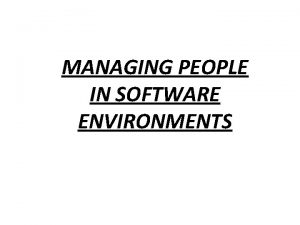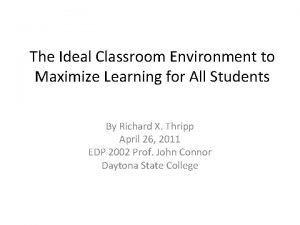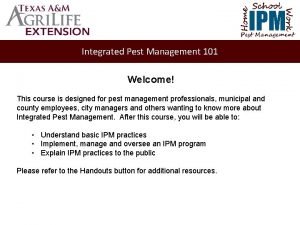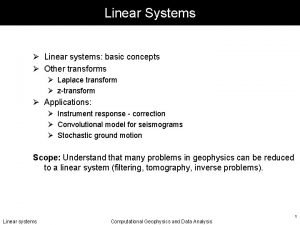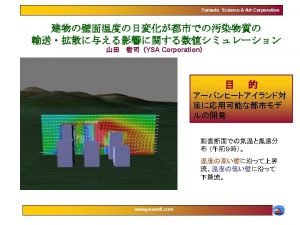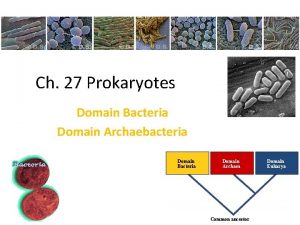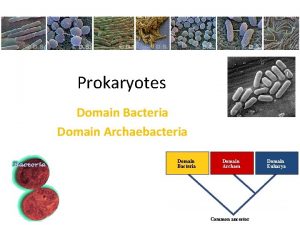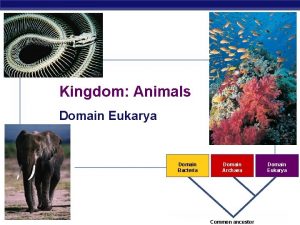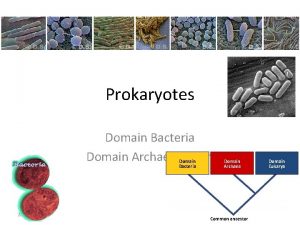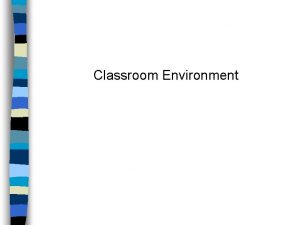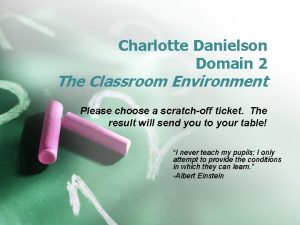Domain 2 The Classroom Environment 2 d Managing





















- Slides: 21

Domain 2: The Classroom Environment 2 d. Managing Student Behavior The Framework for Teaching Charlotte Danielson 1

Objectives 2 d: Managing Student Behavior � Understand the elements of 2 d � Distinguish the difference in levels of performance � Review examples of 2 d behavior � Identify my level of performance on 2 d � Incorporate strategies to improve my level of performance in 2 d 2

Why “Managing Student Behavior” Is Important For students to engage deeply with content, In a productive classroom, § The classroom environment must be orderly § The atmosphere must feel business-like and productive § The atmosphere is not authoritarian § Standards of conduct are clear to students § They know what they are permitted to do § Students know what they can expect of their classmates Even when their behavior is being corrected, § Students feel respected § Student dignity is not undermined 3

Managing Classroom Behavior Skilled teachers regard positive student behavior not as an end in itself but as a prerequisite to high levels of engagement in content. 4

� Expectations § Student conduct expectations are established. § Student conduct expectations are being implemented. § Evidence is clear from what is said or by student actions. 5

Monitoring of Student Behavior Teachers … § have eyes in the back of their heads. § are attuned to what’s happening in the classroom. § can move subtly to help students. § can re-engage with content addressed in the lesson. At a high level, such monitoring is preventive and subtle making it challenging to observe 6

� Response to Student Misbehavior § All students can violate one or another of the agreed-upon standards of conduct. § How the teacher responds to infractions is a mark of skill. § Teacher responses provide students with an indication of how seriously standards should be followed. § The teacher should understand why students are responding in this manner. § The teacher responds in a way that respects the dignity of the student. § Best teacher responses address misbehavior immediately. 7

Managing Student Behavior Indicators � Clear standards of conduct, possibly posted, and possibly referred to during a lesson � Absence of acrimony between teacher and students concerning behavior � Teacher awareness of student conduct � Preventive action when needed by the teacher � Fairness � Absence of misbehavior 8

Relevant or Not Relevant because … � Classroom rules are posted, but neither teacher nor students refer to them. Relevant-This evidence indicates that the teacher has attempted to set expectations for the classroom—an element for this component—but does little to actually enforce or uphold those expectations. The teacher asks to speak to a student privately about misbehavior. Relevant-This is evidence of a teacher’s response to student behavior, an element for Managing Student Behavior. � The teacher moves to every section of the classroom, keeping a close eye on student behavior. � Relevant-This observation shows that the teacher is monitoring student conduct and also taking action to prevent misbehavior; these are both indicators for Managing Student Behavior. 9

Levels of Performance Answers A. Basic (Level 2) B. Proficient (Level 3) C. Distinguished (Level 4) D. Unsatisfactory ( Level 1) 10

Level 3: Proficient Critical Attributes � Standards � Student of conduct have been established. behavior is generally appropriate. � The teacher frequently monitors student behavior. � The teacher's response to student misbehavior is effective. � The teacher acknowledges good behavior. 11

Level 2 Basic Critical Attributes � The teacher attempts to maintain order in the classroom but with uneven success; standards of conduct, if they exist, are not evident. � The teacher attempts to keep track of student behavior but with no apparent system. � The teacher’s response to student misbehavior is inconsistent, sometimes very harsh, other times lenient. 12

Level 1: Unsatisfactory Critical Attributes � The classroom environment is chaotic with no apparent standards of conduct. � The teacher does not monitor student behavior. � Some students violate classroom rules, without apparent teacher awareness. � When the teacher notices student misbehavior, she/he appears helpless to do anything about it. 13

Level 4: Distinguished Critical Attributes In addition to the characteristics of a level of Proficient performance, �Student behavior is entirely appropriate; there is no evidence of student misbehavior. �The teacher monitors student behavior without speaking, just by moving about the classroom. �Students respectfully intervene with classmates as appropriate to ensure compliance with standards of conduct. 14

Distinguished Level Answers �A student suggests a revision to one of the classroom rules. � The teacher notices that some students are talking among themselves and, without a word, moves nearer to them; the talking stops. � The teacher asks to speak to a student privately about misbehavior. �A student reminds his classmates of the class rule about chewing gum. 15

Proficient Level Answers � Upon a nonverbal signal from the teacher, students correct their behavior. � The teacher moves to every section of the classroom to keep a close eye on student behavior. � The teacher gives a student a hard look, and the student stops talking to her neighbor. 16

Basic Level Answers � Classroom rules are posted, but neither teacher nor students refer to them. � The teacher repeatedly asks students to take their seats; some ignore him/her. � To one student: “Where’s your late pass? Go to the office. ” To another: “You don’t have a late pass? Come in and take your seat; you’ve missed enough already. ” 17

Unsatisfactory Level Answers � Students are talking among themselves with no attempt by the teacher to silence them. � An object flies through the air without the teacher appearing to notice. � Students are running around the room resulting in chaos. � Students are using their phones and other electronics; the teacher doesn’t do anything. 18

Monitoring Student Behavior Checklist � Scan the classroom. � Walk around the classroom. � Provide feedback to students on appropriate behavior. � Look for signs of frustration or confusion. � Move to the students needing redirection. 19

Remember, the best classroom management strategy is effective instruction. 20

REFLECT 2 d: Managing Student Behavior � To demonstrate my understanding of the elements of 2 d, I can explain two elements to a partner. �I understand the difference in Levels of Performance and can cite key words for each level. � Two examples of 2 d behavior include … � My level of performance on 2 d is …, and I am going to change ____ to move to the next level of performance. � In addition to the changes cited above, I will incorporate two more strategies to improve my level of performance in 2 d. 21
 Domain 2 classroom environment examples
Domain 2 classroom environment examples Smart classroom vs traditional classroom
Smart classroom vs traditional classroom Polycentric attitude
Polycentric attitude Managing in a global environment
Managing in a global environment Managing in a unionized environment
Managing in a unionized environment Managing in a global environment
Managing in a global environment Managing diverse employees in a multicultural environment
Managing diverse employees in a multicultural environment Managing in a global environment chapter 4
Managing in a global environment chapter 4 Managing in a global environment chapter 4
Managing in a global environment chapter 4 Managing people in software environment
Managing people in software environment Ideal classroom environment
Ideal classroom environment Ipm
Ipm Financial environment of business
Financial environment of business Language processor mcq
Language processor mcq What is time domain and frequency domain
What is time domain and frequency domain Domain specific vs domain general
Domain specific vs domain general Time reversal property of z transform
Time reversal property of z transform Codomain vs range
Codomain vs range Problem domain vs knowledge domain
Problem domain vs knowledge domain Z transform of ramp function
Z transform of ramp function Z domain to frequency domain
Z domain to frequency domain S domain to z domain
S domain to z domain









